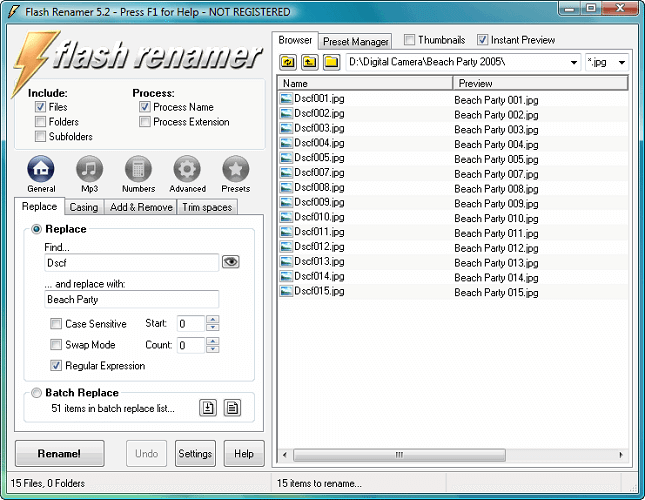
Type in %H%M to add in the hour and minute. We will add an underscore to separate the date and time so go ahead and add “_” after the %d in the Custom field. Let’s add in the time the picture was taken as well. If we happen to have two pictures taken on the same date we are going to run into an issue with duplicate file names. You should see the name built out in the “New Name” column as you build it (Figure 3). Then we add a dash followed by the month (%m) another dash and the day (%d). To add the full four-digit year we put in %Y. Now, we build our format in the Custom filed under the Auto Date section. Type should be Taken (Original) and FMT should be set to custom. Under Auto Date (8), we want to select Prefix for the Mode. You should now see the New Name column taking shape (Figure 2). Click on a picture and then under “File (2)” select Name: Remove. First, we want to remove the existing name. Next, we need to build the rules for renaming our files.

You should now see data show up in the “Taken (Original)” column. Next, we want to use the EXIF data for when the picture was taken. Once you have selected it you should see your pictures show up in the top right window (Figure 1). In the upper left area, you’ll want to browse to the folder that has your pictures in it. There are tons of options for modifying file names but once you get the hang of it you will appreciate how handy BRU is. Once downloaded, follow the wizard to perform the install.ĭon’t let the tool scare you off. Download and install Bulk Rename Utility (BRU).If something goes wrong, you will be able to restore your photos back to before we started. Consider making a backup of all of the photographs you’ll be renaming.

This way you can do all of your photos in a single batch if you desire.


 0 kommentar(er)
0 kommentar(er)
